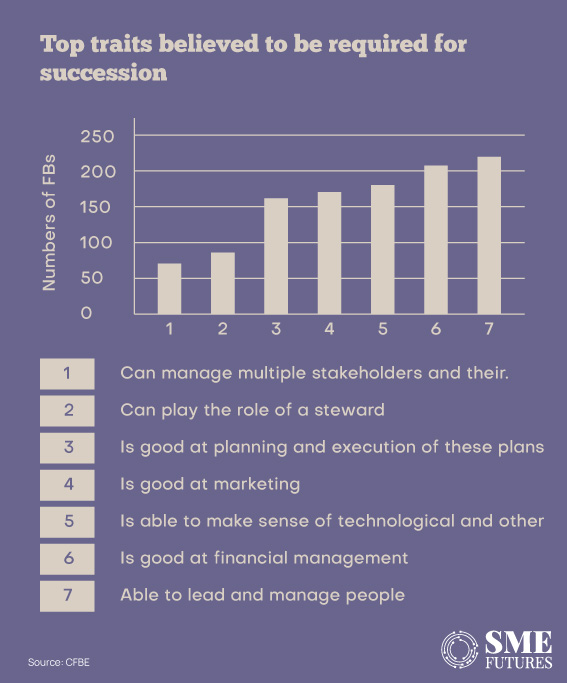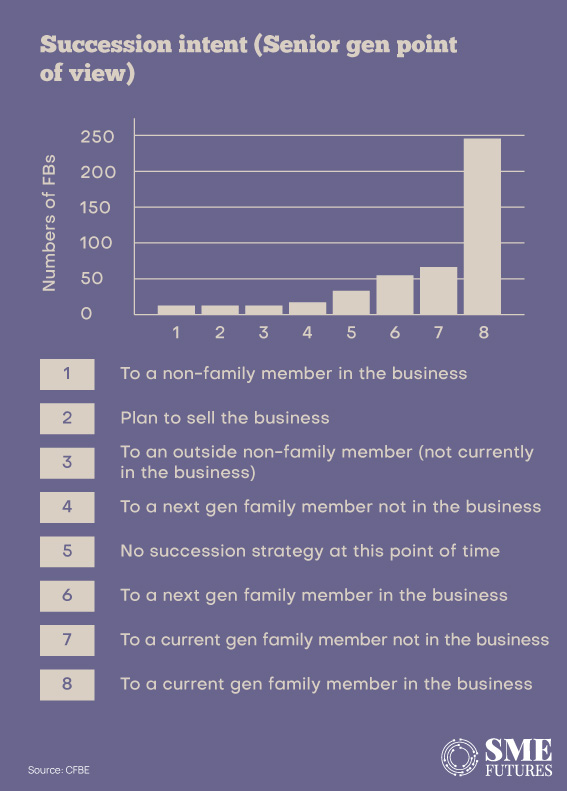Family enterprises have long been a cornerstone of India’s business environment, contributing significantly to the country’s economic growth and stability. These businesses are mostly small and medium-sized enterprises (MSMEs).
In fact, according to SPJIMR’s Centre for Family Business & Entrepreneurship, 83 per cent of manufacturing enterprises are MSMEs, followed by 73 per cent in the service sector. This highlights the large presence of smaller-scale organisations among the surveyed family businesses, demonstrating the diversity and endurance of the Indian entrepreneurial spirit.
According to the institute’s poll on the state of family businesses in India, a large majority of the family businesses in India place a high value on well-defined values and a code of conduct for running their organisations. They stated that they had established family values and developed vision-mission statements.
When it comes to selecting a successor, most family firms cite the ability to lead and manage people as the most important trait that he/she should possess. Let’s look at what India’s family firms think about passing on the business baton.
What traits do family businesses look for in a successor
More than half (58 per cent) of the FBs surveyed believed that the most critical trait required for a successor is the ability to lead and manage people effectively. This highlights the significance of leadership abilities in enabling the smooth transition of a family business to the next generation.
The other desirable traits included proficiency in financial management, adaptability to technological and market changes, and expertise in marketing. These characteristics, taken together, constitute a successor with a well-rounded personality who is capable of navigating the multifarious obstacles of managing a family business in the modern world.

Succession intent: Family vs. outsiders
The survey revealed that a majority (55.5 per cent) of the senior-generation in FBs planned to hand over their business to a current-generation family member who was already involved in the business. This reaffirms the traditional preference for keeping the business within the family.
About 16 per cent of the senior-generation respondents expressed their intent to pass on the business to a family member not currently involved in the business. This indicates a willingness to expand the pool of potential successors beyond those already in managerial roles.
Contrastingly, only 15 per cent of FBs foresaw a transition to the next generation, with the successor already in the business. Additionally, 9 per cent of FBs didn’t have a succession strategy at the time of the survey. A small proportion (1.4 per cent) planned to hand over their business to a non-family member currently working in the business, while 0.8 per cent intended to sell their business.

Next-generation respondents mirrored some of these trends, with half of them believing that the business would likely be handed over to a current-generation family member already involved in the business.
Succession timing: The challenge of letting go
Succession timing is another critical aspect of family business transitions. Among the senior-generation respondents, a significant 58 per cent were undecided about when they would hand over the business to the next generation. This temporal ambiguity suggests that many senior members may be grappling with the emotional and practical aspects of letting go.
A subset of senior-generation respondents had a clear timing in mind, with 22.4 per cent planning to relinquish control within 5 years, and 7 per cent looking to do so even earlier, within 2 years. However, 13 per cent were not willing to “let go” at all, expressing their desire to continue running the business for as long as they could.
The next-generation respondents exhibited a similar degree of uncertainty, with 68 per cent unclear about the timing of succession. 23.5 per cent expected to take over the business in the next 5 years, while 8.5 per cent anticipated doing so within the next 2 years.

Reasons for not “letting go”
Understanding the reasons behind the hesitance to transition is essential. Among senior-generation respondents, 24 per cent cited a lack of capability as their reason for not “letting go.” This indicates that they may have concerns about the readiness of the next generation to take on leadership roles.
Additionally, 22 per cent stated a lack of interest in the next generation as a significant factor in their reluctance to hand over the business. This sentiment could stem from doubts about the commitment or suitability of the younger family members for leadership positions.
Financial security was another substantial concern, with 16.5 per cent of senior-generation respondents expressing their need to maintain their financial stability. This suggests that some senior members may be relying on the business as a primary source of income.
Furthermore, 15 per cent did not see how they could engage themselves post-handover, highlighting a potential void in their lives once they stepped away from the business that they had been deeply involved in for years.
Conflict among different members of the next generation was cited by 11 per cent as the reason behind them being undecided about the timing of succession. This points to the complexities of familial relationships and their impact on succession planning.
Lastly, approximately 11 per cent of senior-generation respondents cited the absence of a suitable next-generation member to run the business as a key factor in their decision to delay succession.

Prof. Tulsi Jayakumar, Executive Director, Centre for Family Business & Entrepreneurship, SPJIMR states that the temporal ambiguity and the reasons cited for not “letting go” present an intriguing narrative, highlighting the complex dynamics and decision-making processes within family-owned enterprises.
Finally, effective succession planning depends on several aspects, including essential leadership and adaptability skills, the intention to maintain the firm within the family or explore external options, and the timing of the shift. Understanding the reasons behind the reluctance to “let go” is crucial for resolving the difficulties that family businesses encounter during this process.











